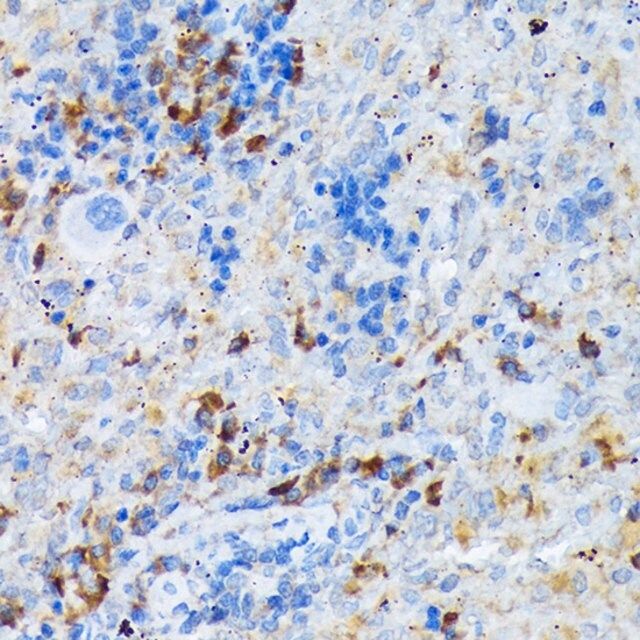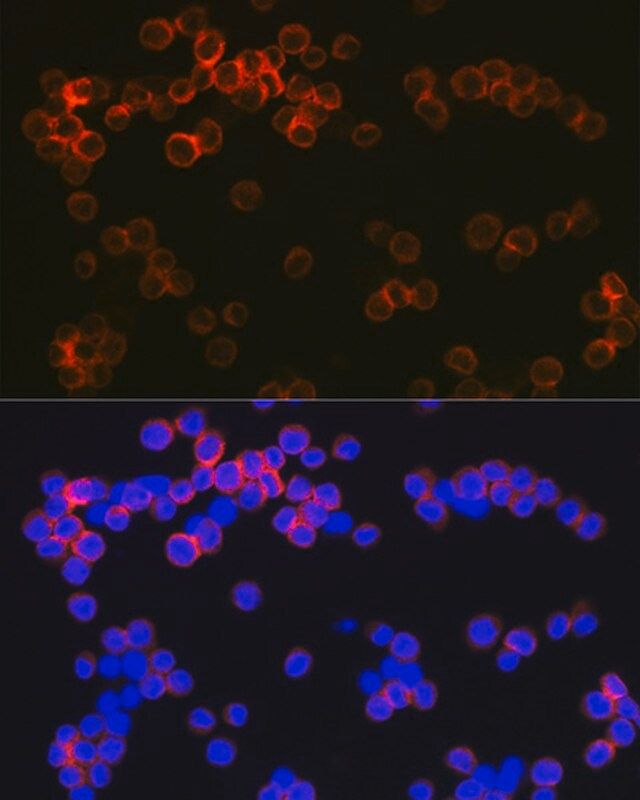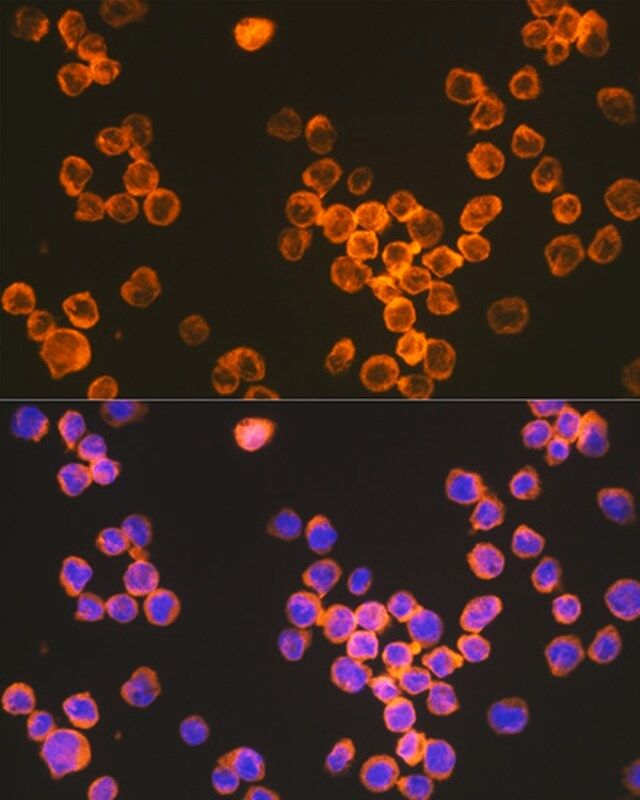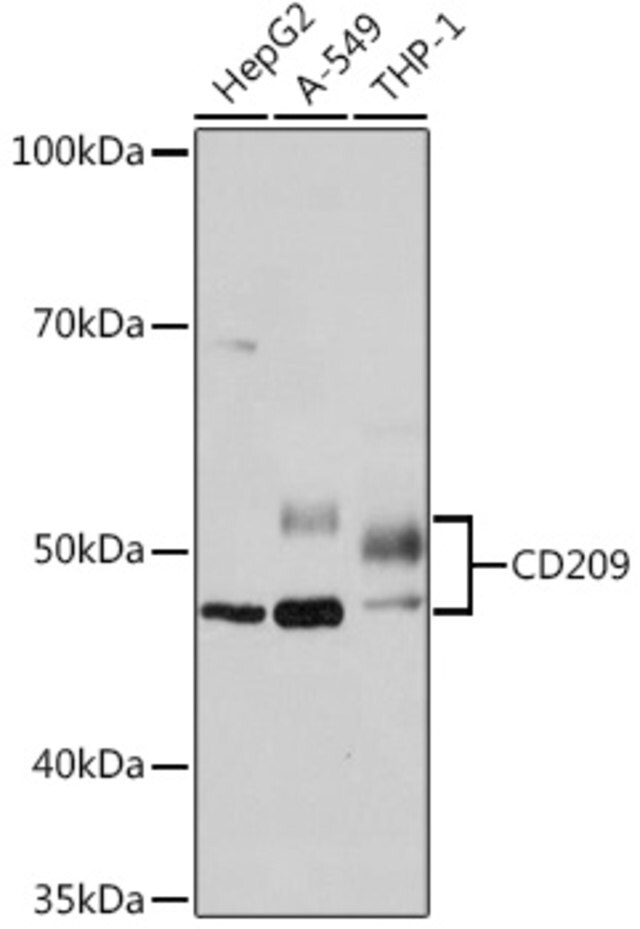您的位置:首页 > 产品中心 > Anti-CD209 antibody produced in rabbit
产品性质
| biological source【生物来源】 | rabbit |
| Quality Level【质量水平】 | 100 |
| antibody product type | primary antibodies |
| clone【克隆】 | monoclonal |
| form【形式】 | liquid |
| species reactivity | rat, human, mouse |
| concentration【浓度】 | 2.35 mg/mL |
| technique(s) | immunohistochemistry: 1:50-1:200 western blot: 1:500-1:2000 |
| UniProt accession no.【UniProt登记号】 | Q9NNX6 |
| shipped in【运输】 | wet ice |
| storage temp.【储存温度】 | −20℃ |
| Gene Information | human ... CD209(30835) |
基本信息
| General description【一般描述】 | This gene encodes a transmembrane receptor and is often referred to as DC-SIGN because of its expression on the surface of dendritic cells and macrophages. The encoded protein is involved in the innate immune system and recognizes numerous evolutionarily divergent pathogens ranging from parasites to viruses with a large impact on public health. The protein is organized into three distinct domains: an N-terminal transmembrane domain, a tandem-repeat neck domain and C-type lectin carbohydrate recognition domain. The extracellular region consisting of the C-type lectin and neck domains has a dual function as a pathogen recognition receptor and a cell adhesion receptor by binding carbohydrate ligands on the surface of microbes and endogenous cells. The neck region is important for homo-oligomerization which allows the receptor to bind multivalent ligands with high avidity. Variations in the number of 23 amino acid repeats in the neck domain of this protein are rare but have a significant impact on ligand binding ability. This gene is closely related in terms of both sequence and function to a neighboring gene (GeneID 10332; often referred to as L-SIGN). DC-SIGN and L-SIGN differ in their ligand-binding properties and distribution. Alternative splicing results in multiple variants.[provided by RefSeq, Feb 2009] |
| Immunogen【免疫原】 | A synthesized peptide derived from human CD209 |
| Physical form【外形】 | Buffer: PBS with 0.02% sodium azide,0.05% BSA,50% glycerol,pH7.3. |








